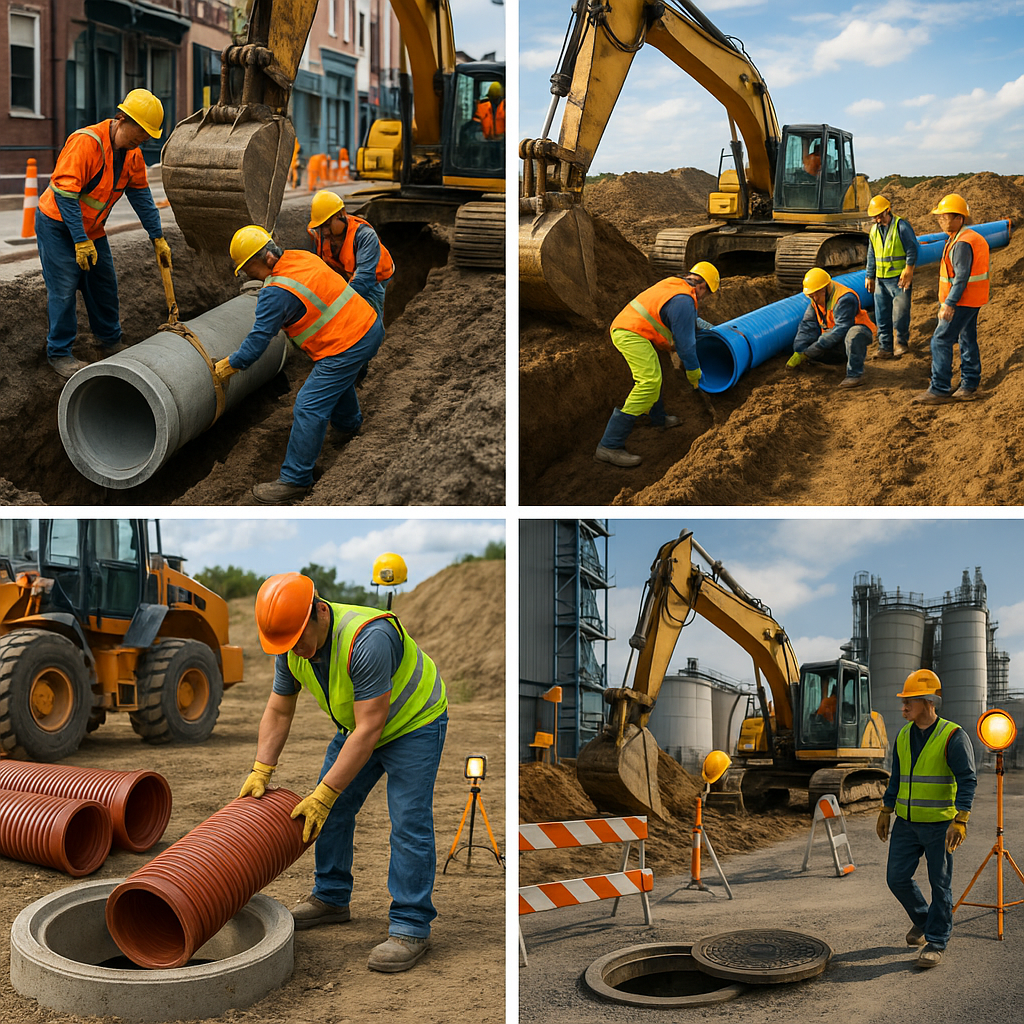Advanced Clay Pipe Inspection Techniques in 2024
Explore new technologies in clay pipe inspection, enhancing safety and efficiency for sewer systems in 2024.

Advanced Clay Pipe Inspection Techniques in 2024
Introduction
Clay pipes have been a staple in sewer systems for decades, but their inspection and maintenance have evolved significantly with technological advancements. This article explores the latest developments in clay pipe inspection, highlighting new technologies, industry regulations, market trends, and best practices for 2024.
New Technologies and Equipment
Robotic Camera Systems
The use of robotic camera systems has become the norm in clay pipe inspection. These systems provide high-definition, 360-degree panoramic views, allowing inspectors to remotely assess the condition of pipes without the need for excavation or direct human entry. This technology not only improves the accuracy of inspections but also enhances worker safety by reducing exposure to hazardous environments.
Sonar Technology
Incorporating sonar technology into inspections helps create 3D maps of sewer interiors. This technology is crucial for detecting blockages, leaks, and the precise location of aging clay pipes, which are often prone to cracks and infiltration.
Multi-Sensor Robotic Systems
Multi-sensor robotic systems combine cameras, LiDAR, and AI-driven deep learning models to optimize defect detection and classification. These systems surpass traditional 2D imaging by providing richer data for assessing the condition of clay pipes.
Artificial Intelligence and Computer Vision
The integration of AI and computer vision technologies automates defect recognition, minimizing human error and speeding up the inspection process. This automation is particularly beneficial in identifying subtle defects that may not be apparent through manual inspection.
Real-Time Monitoring and Data Analytics
With real-time monitoring and data analytics, sewer inspection businesses can implement predictive maintenance strategies. This enables the anticipation of potential failures in clay pipe systems, ensuring timely interventions and reducing the likelihood of costly emergency repairs.
Industry Regulations and Standards
Compliance with EPA environmental regulations and local safety standards is increasingly facilitated by digital documentation and automated reporting systems. These tools help ensure that inspections meet stringent requirements, thereby reducing environmental risks associated with leaks or illegal discharges.
Market Trends and Business Opportunities
Market Growth
The sewer inspection systems market is projected to grow from around USD 500 million in 2024 to USD 800 million by 2033. This growth is driven by urban infrastructure needs and smart city initiatives that integrate advanced sewer management technologies.
Demand for Non-Invasive Inspection Methods
There is a growing demand for non-invasive, cost-effective inspection methods. These methods are particularly important for fragile clay pipe networks in older residential and municipal systems, as they reduce the need for excavation and repair costs.
Opportunities for AI-Enabled Robotic Inspection Services
Companies offering AI-enabled robotic inspection services and integrated data management platforms tailored to clay pipe conditions stand to benefit from the expanding market. These services provide clients with precise, reliable data that enhance decision-making for maintenance and repair.
Safety Protocols and Best Practices
Remote Inspection Tools
The use of remote inspection tools significantly reduces worker exposure to hazardous gases and confined spaces, thereby improving occupational safety. Tools such as portable gas detectors, real-time video feeds, and digital safety logs are essential in identifying and mitigating risks before physical intervention.
Environmental Monitoring
Environmental monitoring through sensors helps prevent contamination from clay pipe leaks, supporting public health and regulatory compliance. This proactive approach is crucial for maintaining the integrity of sewer systems and protecting the environment.
Cost and Pricing Information
While advanced inspection technologies require a high initial investment, they offer long-term cost savings by minimizing invasive excavation, focusing repairs precisely, and enabling predictive maintenance. As these technologies mature and competition expands, they are expected to become more affordable, facilitating wider adoption.
Conclusion
The advancements in clay pipe inspection technologies in 2024 present numerous benefits, including improved safety, accuracy, and cost-efficiency. As the industry continues to evolve, businesses that leverage these technologies and adhere to regulatory compliance will be well-positioned to capitalize on growing market opportunities.
Practical Tips
- Invest in training for using new technologies to ensure effective implementation.
- Regularly update inspection protocols to align with the latest industry standards.
- Utilize data analytics to inform maintenance schedules and reduce emergency repairs.